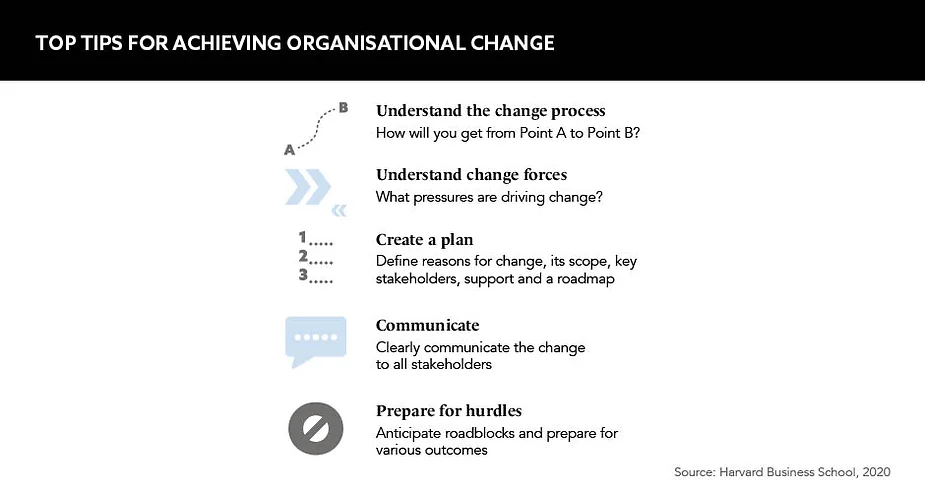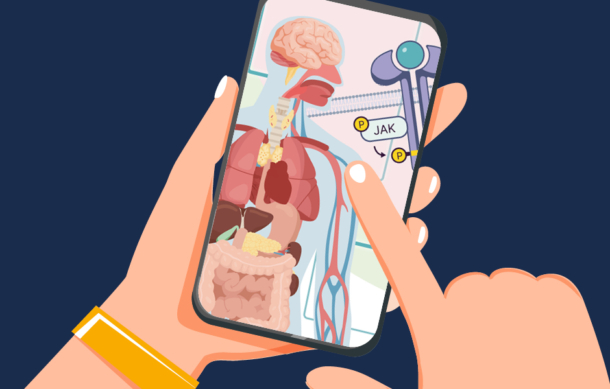Driving internal organisational change can be a daunting prospect, particularly when time, resources or know-how are limited. How can industry leaders and employees harness the mechanisms available to them to overcome existing hurdles and drive impactful change within their organisations?
Words by Cheyenne Eugene
Working for a pharmaceutical giant can be empowering in itself: the innovatory muscle is vast, and the lives they can change are countless. However, trying to bring about internal change within these complex organisations can feel next to impossible. Whether they be process-based or cultural, what mechanisms drive internal change, and how should accountability be distributed between industry leaders and the workforce?
Hurdles for change
Heavy regulation is pharma’s double-edged sword. From an internal change perspective, this can present itself as layers upon layers of bureaucracy, which is ironic given that “a common theme [for change] across geographies and functions is simplification”, as Ioana Parsons, General Manager, Ipsen Poland, highlights. This, combined with the fact that some concepts are simply more difficult to implement, can leave promising proposals suspended in an abyss of theories and ideas that never came to be.
“Resistance to change is human,” says Parsons, and it illustrates how a culture of scepticism towards change can take hold of teams. While time- and resource-based challenges are easier to measure and address, trying to change employee mindset can feel like a far harder objective to achieve. But, if workplace culture is focused on stimulating rather than stunting change, then this prevents the risk of innovative ideas being dismissed. This could lead to something remarkable being achieved that would have otherwise never come to fruition.
Change from the top
When it comes to the role industry leaders play, consistency is a key element. Many pharma companies pride themselves on their employee development plans, and ensuring that leaders are equipped with the skills to guide change is vital. “Change leadership should be on the curriculum of every new manager course,” urges Parsons. Other mechanisms that could encourage a culture where change management is on the menu include “formal recognition, yearly objectives, behavioural feedback and development plans”.
In relation to leadership and communication, Parsons believes storytelling is an important component. “There’s research about different sources of meaning, which shows that change efforts where leaders tell more than one story are often more likely to succeed,” she says. Applying this to pharma, Parsons suggests that these ‘stories’ could be built around serving patients, becoming market leaders, building relationships with healthcare professionals, improving access for patients, strengthening teams, investing in personal development and contributing to societal betterment.
Change leadership should be on the curriculum of every new manager course
Pharma need look no further than its own doorstep for inspiration on navigating change. Take the companies involved in developing and commercialising COVID-19 vaccines, for example. “They proved many orthodoxies could be challenged and changed,” says Parsons, referencing widespread successes in speeding up all sections of the drug development process, including R&D, regulatory approval and commercialisation. Industries such as tech are another fountain of knowledge from which pharma can drink. Parsons describes these fast-paced sectors as leaders in “attracting, retaining and developing talent”.
Change from within
While it is fair to say that employee-led change will likely have the most bureaucracy to wade through, sometimes the first step is simply seeing and naming the issue. “It’s got to start with those of us that are at the root. When we see something, we have to say something and use our voice,” says Nikki Jones, Head of Diversity, Equity and Inclusion, Healthcare Businesswomen’s Association, speaking on The GOLD Podcast. For example, discussing this year’s International Women’s Day theme of ‘#BreakTheBias’, Jones urges everyone to challenge discrimination. “Our voices are so incredibly powerful, but it’s choosing to use that voice. Choosing to challenge those discrimination moments and finding someone that is in a higher authority, particularly if it’s in the workplace,” she says. “Be that person that intervenes for someone who does not feel as though they have a voice – that’s the most critical thing.”
If that experience then grows into a desire to drive change, Parsons provides a practical strategy for people to use to take the next step. Firstly, she suggests investing time into distilling what and why you want to see change, in other words “testing concepts and communication until it’s crystal clear”. Gradually building a network of allies is next, and Parsons recommends having at least a few senior sponsors. Then, it’s time to test and improve the idea. “There’s no point waiting to have the perfect solution because there isn’t one, and people build ownership through discussion and co-creation,” she says. Finally, define what ‘good’ looks like and how this will be measured and monitored. “There are very few silver bullets. Making change happen needs time, nurturing and iteration,” Parsons concludes.
The pharma industry should not fear any desire for organisational change. Rather than it representing an attack, it signals an engaged workforce that wants the best for its industry and those within it. Mechanisms for internal change, be that training, impactful storytelling or step-by-step strategies, should be accessible to everyone, no matter their area or level of employment. Only then will industry leaders and workforces have the same fire in their bellies to drive change for patients, for themselves and for their organisations.






